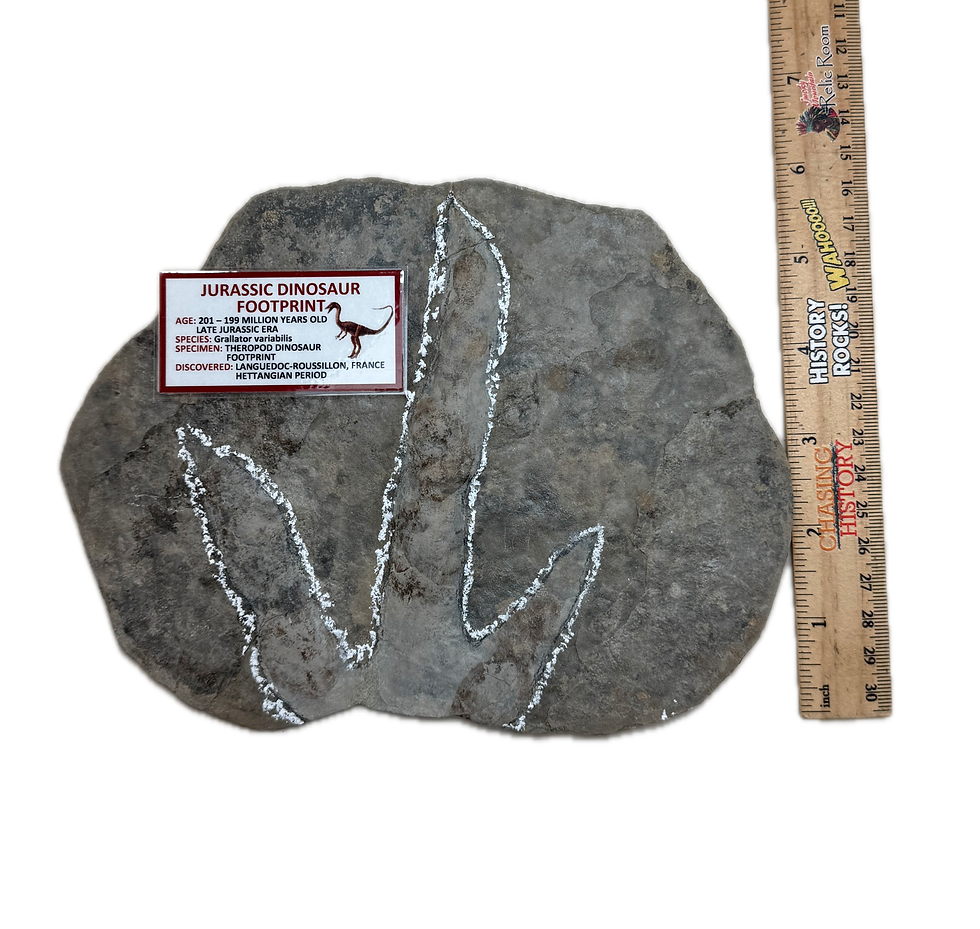Megalodon Shark Tooth Display
- Authentic Megalodon Shark Tooth
- Largest Shark to ever exist!
- 16 - 1.6 Million Years Old
- Found near Charleston, SC
- Box measures 6" x 8" x 1"
- Ideal for educational settings!
(Each display will have a unique one of a kind Megalodon Shark Tooth. Each tooth will have variances in size, shape, color, etc. Rest assure you will recieve a quality hand picked Megalodon Shark Tooth in your display.)
The most common fossils of megalodon are its teeth. Diagnostic characteristics include a triangular shape, robust structure, large size, fine serrations, a lack of lateral denticles, and a visible V-shaped neck (where the root meets the crown). The tooth met the jaw at a steep angle, similar to the great white shark. The tooth was anchored by connective tissue fibers, and the roughness of the base may have added to mechanical strength. The lingual side of the tooth, the part facing the tongue, was convex; and the labial side, the other side of the tooth, was slightly convex or flat. The anterior teeth were almost perpendicular to the jaw and symmetrical, whereas the posterior teeth were slanted and asymmetrical.
Megalodon teeth can measure over 180 millimeters (7.1 in) in slant height (diagonal length) and are the largest of any known shark species, implying it was the largest of all macropredatory sharks.
~ The Megalodon ~
Megalodon (Otodus megalodon), meaning "big tooth", is an extinct species of mackerel shark that lived approximately 23 to 3.6 million years ago (Mya), during the Early Miocene to the Pliocene. It was formerly thought to be a member of the family Lamnidae and a close relative of the great white shark (Carcharodon carcharias). However, it is now classified into the extinct family Otodontidae, which diverged from the great white shark during the Early Cretaceous. Its genus placement is still debated, authors placing it in either Carcharocles, Megaselachus, Otodus, or Procarcharodon. This is because transitional fossils have been found showing that megalodon is the final chronospecies of a lineage of giant sharks originally of the genus Otodus which evolved during the Paleocene.
While regarded as one of the largest and most powerful predators to have ever lived, megalodon is only known from fragmentary remains, and its appearance and maximum size are uncertain. Scientists differ on whether it would have more closely resembled a stockier version of the great white shark, the whale shark (Rhincodon typus), the basking shark (Cetorhinus maximus) or the sand tiger shark (Carcharias taurus). Most estimates of megalodon's size extrapolate from teeth, with maximum length estimates up to 14–20.3 meters (46–67 ft) and average length estimates of 10.5 meters (34 ft). Estimates suggest their large jaws could exert a bite force of up to 108,500 to 182,200 newtons (24,400 to 41,000 lbf). Their teeth were thick and robust, built for grabbing prey and breaking bone.
Megalodon probably had a major impact on the structure of marine communities. The fossil record indicates that it had a cosmopolitan distribution. It probably targeted large prey, such as whales, seals and sea turtles. Juveniles inhabited warm coastal waters and fed on fish and small whales. Unlike the great white, which attacks prey from the soft underside, megalodon probably used its strong jaws to break through the chest cavity and puncture the heart and lungs of its prey.
The animal faced competition from whale-eating cetaceans, such as Livyatan and other macroraptorial sperm whales and possibly smaller ancestral killer whales. As the shark preferred warmer waters, it is thought that oceanic cooling associated with the onset of the ice ages, coupled with the lowering of sea levels and resulting loss of suitable nursery areas, may have also contributed to its decline. A reduction in the diversity of baleen whales and a shift in their distribution toward polar regions may have reduced megalodon's primary food source. The shark's extinction coincides with a gigantism trend in baleen whales.





















